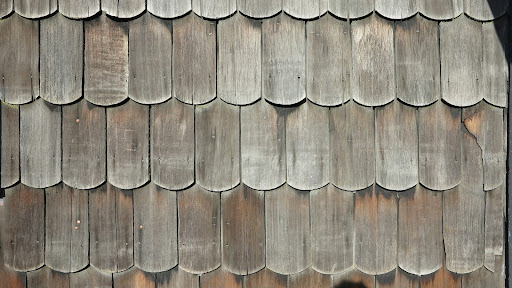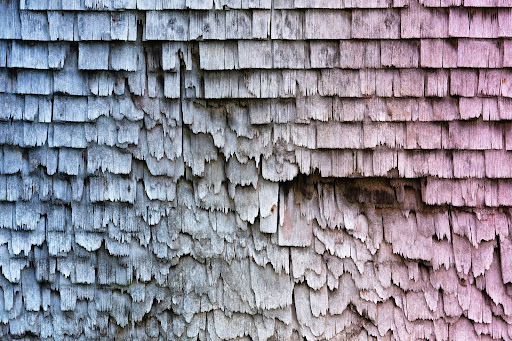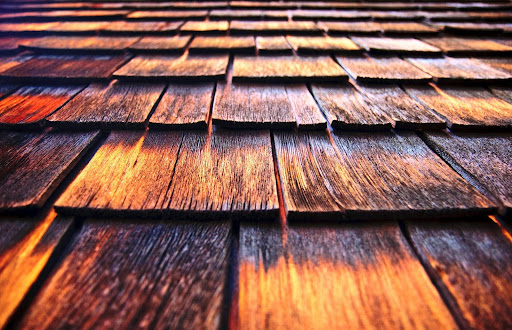“Roof Damage Red Flags: A Homeowner’s Guide”

In the realm of homeownership, safeguarding one’s property investment goes hand in hand with ensuring a secure living environment. As a seasoned roofing professional and industry expert, I understand the paramount importance of recognizing the early indicators of roof damage. From missing shingles to granules in gutters, and from water stains to roof sagging structures, these red flags serve as crucial warning signs of potential hazards such as moisture intrusion and compromised structural integrity. Discussing the risk of water, rain, leaks, and methods for leak detection and prevention. Exploring common signs and indicators of roof damage to help homeowners identify potential issues early. Understanding the destructive forces of hail, lightning, and wind on roofs and strategies for protection. In this comprehensive guide tailored to vigilant homeowners like yourself, we’ll delve into each of these telltale signs, empowering you to take swift and proactive measures to protect your home and your family’s safety.
Spotting Missing Shingles: A Warning of Potential Roof Leaks

Ah, missing shingles – those little buggers are more than just an eyesore, they’re a flashing red alert on your roof’s health! Think of them like missing scales on a fish – sure, the fish might survive for a while, but it’s vulnerable. Same goes for your roof. Each shingle acts as a soldier in your home’s defense against the elements, and when one goes AWOL, the whole roof’s integrity weakens.
Now, missing shingles can happen for a variety of reasons. Strong winds can yank them right off, heavy snow can cause them to crack and break away, or even just plain old age can make them brittle and fall apart. But whatever the culprit, the result is the same: an exposed underlayment – that black, tar-like layer beneath the shingles. And let me tell you, that underlayment isn’t exactly designed to withstand a downpour. Water seeping through a missing shingle might not cause a huge leak right away, but it’s like a tiny crack in a dam – it’ll only get bigger with time.
So, if you spot a missing shingle or two during your next gutter cleaning or roof inspection (and yes, folks, regular roof inspections are a must!), don’t delay! Get on the phone to a reputable roofing contractor and get those shingles replaced pronto. It’s a much smaller headache (and wallet hit) to fix a couple of missing shingles than to deal with a full-blown roof leak and potential water damage later on.
Recognizing Early Signs: Inspecting for Displaced or Damaged Shingles
Keeping an eye out for displaced or damaged shingles is crucial for catching roof problems early on. Here’s what you need to look for:
- Balding Patches: Missing shingles are the most obvious sign of trouble. Large areas with no shingles exposed means your roof’s defenses are down.
- Curled or Cracked Shingles: Shingles that are warped, curled up at the edges, or have visible cracks are weak and more likely to break loose.
- Granule Loss in Gutters: Those gritty bits in your gutters? Those are shingle granules, and excessive amounts mean your shingles are wearing down prematurely.
- Misaligned Shingles: Shingles that aren’t lying flat or are overlapping unevenly could indicate wind damage or improper installation.
- Time, Aging, Wear, Flashing: Examining the effects of time, aging, and wear on roofing materials and the importance of properly installed flashing.
- Solar Shingles: Understanding the benefits and maintenance considerations of solar shingles for homeowners.
- Installation Process: Discussing the importance of proper installation techniques in preventing future roof damage.
Implications for Roof Integrity: Understanding the Risk of Water Infiltration
Don’t underestimate the importance of a healthy shingle layer. Here’s why:
- Exposed Underlayment: The layer beneath your shingles (usually black tar paper) isn’t designed to stop water for long. A missing shingle means your underlayment is vulnerable.
- Concrete Roofing: Discussing the characteristics and considerations of concrete roofing materials in relation to potential damage in the context of concrete roofs.
- Ice dams and leaks: Damaged shingles can create pathways for water to seep under the flashing and into your attic, especially during winter with ice dams.
- Mold and Mildew Growth: Moisture trapped inside your roof due to leaks can lead to mold and mildew growth, posing health risks and causing structural damage.
- Reduced Roof Lifespan: Constant exposure to the elements weakens compromised shingles, leading to a shortened lifespan for your entire roof.
Granules in Gutters: The Silent Indicators of Roofing Ventilation Issues

Those gritty bits piling up in your gutters? They might seem harmless, but they could be a silent SOS from your roof. See, those are granules – tiny pebbles embedded in asphalt shingles that shield them from the sun’s harsh rays. Finding a few here and there after a heavy storm is normal, but excessive amounts can signal trouble.
Why? Because overflowing gutters with granules often point to inadequate roof ventilation. Your roof needs proper airflow to release heat and moisture that builds up underneath. If it’s trapped, it can prematurely age your shingles, causing them to shed those granules faster. Think of it like a stuffy attic – the heat just cooks everything! So, keep an eye on those gutters, and if they’re overflowing with granules, call in a professional to check your roof’s ventilation system. It could save you a ton of money (and headaches) down the road!
Why Granules Matter: Examining Their Role in Roof Protection
Those tiny pebbles clinging to your shingles? They deserve way more respect than they get! Here’s why:
- Sun Protection: Granules act like a shield, absorbing the sun’s ultraviolet (UV) rays that would otherwise bake and weaken your shingles.
- Weather Resistance: They create a water-resistant barrier, helping your roof shed rain and snow.
- Impact Resistance: Granules add an extra layer of defense against hail and windblown debris.
- Fire Resistance: Some granules even contain fire-retardant properties for an extra layer of safety.
Addressing Ventilation Concerns: Strategies for Maintaining a Healthy Roof System
So, if those granules are disappearing faster than you’d like, it might be time to address your roof’s ventilation. Here’s how:
- Intake and Exhaust Vents: Ensure you have adequate soffit vents at the eaves for intake and ridge vents at the peak for exhaust.
- Sun Heat UV: Investigating the impact of sun exposure and UV radiation on roofing materials and longevity.
- Balanced Airflow: The goal is to create balanced airflow throughout your attic to remove heat and moisture.
- Professional Inspection: If you’re unsure about your ventilation system, call in a qualified roofing professional to assess it and recommend solutions. Early intervention can save you a lot of trouble (and money) in the long run!
Water Stains: Unveiling Hidden Roof Leak Threats

Don’t be fooled by a pretty ceiling – water stains are a homeowner’s worst nightmare! They’re like creepy crawlies lurking in the shadows, hinting at a potential roof leak and understanding the threat of fungus and mold growth on roofs and their implications for structural integrity. Here’s why they deserve your immediate attention:
- Hidden Leaks: Water can travel sneaky distances before showing up as a stain. That brown patch on your living room ceiling could mean a leak originating way up in your attic.
- Mold and Mildew Magnets: Moisture trapped by a leak creates a breeding ground for mold and mildew – those fuzzy, greenish-black patches that can cause respiratory problems and property damage.
- Cold, Ice and Snow: Exploring the hazards of cold weather elements like ice and snow on roofs and preventative measures.
- Structural Woes: Left unchecked, leaks can weaken the wooden trusses and beams that support your roof. Nobody wants a roof caving in, right?
So, the next time you spot a water stain, don’t ignore it! Call in a professional roofer to track down the source of the leak and get it fixed before it turns into a major headache (and expense).
Tracing the Origins: Identifying Sources of Water Intrusion
Water stains can be tricky detectives – they show up but don’t always tell the whole story about where the leak originated. Here’s how to become a leak-hunting Sherlock Holmes:
- Stained Ceiling, High Possibility: A stain on your ceiling directly indicates a leak somewhere above, likely in the roof or attic.
- Wall Stains, Follow the Trail: Stains on exterior walls could be due to roof leaks, but also from foundation cracks or plumbing issues. Look for clues like the stain’s location relative to windows or pipes.
- Attic Inspection: Don’t be afraid to get your Sherlock on and climb into the attic (safely, of course!). Look for signs of moisture near vents, chimneys, or along roof rafters.
- Professional Help: If you’re stumped, don’t hesitate to call in a professional roofer. They have the experience and tools (like moisture detectors) to pinpoint the exact source of the leak.
- Sustainability: Exploring sustainable roofing options and their benefits in mitigating environmental damage.
Remedial Measures: Steps to Take Upon Discovery of Water Stains
Water stains are a red flag, but don’t panic! Here’s what to do:
- Contain the Source (if possible): If the leak seems to be actively dripping, try to contain it with a bucket or tarp. But remember, this is a temporary fix!
- Clear the Area: Move any furniture or belongings that could get damaged by further water exposure.
- Document, Document, Document: Take pictures of the stain and surrounding areas. This will be helpful for the roofer when diagnosing the problem.
- Call a Professional: Don’t try to be a roof-repair superhero! A qualified roofer can assess the damage, locate the leak, and recommend the best course of action.
Sagging Structures: A Sign of Roof Deck Compromise

A roof is supposed to hold its head high, not droop like a deflated whoopie cushion! If you notice dips or sags in your ceiling, it’s a glaring red flag that shouldn’t be ignored. Here’s why:
- Roof Deck Woes: Roof sagging typically points to a weakened roof deck – the flat surface beneath your shingles that supports the entire roof structure.
- Moisture Culprit: The most common culprit? Water damage! Moisture can rot the wooden roof deck, making it lose its strength and causing it to sag.
- Roof Types: Exploring different types of roofs and roofing materials and their susceptibility to damage.
- Structural Danger: A sagging roof is a structural hazard waiting to happen. If left unaddressed, it could lead to a roof collapse – yikes!
Assessing the Severity: Determining the Cause and Scope of Roof Sagging
A dip in your ceiling can send shivers down your spine, but don’t panic yet! Here’s how to gauge the situation:
- Severity Check: The extent of the sag is a good indicator of how serious the problem is. A minor dip might be manageable, while a large, spreading sag demands immediate attention.
- Visible Signs: Look for cracks in the ceiling or plaster, water stains, or even sunlight peeking through – all signs of a potentially compromised roof deck.
- Professional Assessment: For peace of mind (and your safety!), call in a qualified roofer. They can assess the cause and extent of the damage and recommend the best course of action. Early detection is key!
Safeguarding Your Roof Deck: Preventive Measures and Structural Integrity
Nobody wants a droopy roof! Here’s how to keep your roof deck strong and your home safe:
- Regular Inspections: Schedule regular roof inspections, especially after heavy storms or snowfall. Early detection is key to preventing major problems.
- Proper Ventilation: Ensure your attic has adequate ventilation to prevent moisture buildup and potential rot
- Quality Materials: When replacing your roof, invest in high-quality materials that can withstand the elements. A strong roof deck is the foundation of a healthy roof system!
References
- [National Roofing Contractors Association, https://www.nrca.net/]
- [Bob Vila, https://www.bobvila.com/tags/roofing]
- [CertainTeed, https://www.certainteed.com/products/residential-roofing]
- [GAF, https://www.gaf.com/en-us/roofing-materials/residential-roofing-materials/shingles]
- [Owens Corning, https://www.owenscorning.com/en-us/roofing/components/products][National Roofing Contractors Association, https://www.nrca.net/Technical/PDF?id=167187&k=28202]
- [Environmental Protection Agency, https://www.epa.gov/mold]
- [The National Association of Home Builders, https://www.reservedataanalyst.com/mt-content/uploads/2019/10/national-association-of-home-builders-life-expectancies.pdf]
- https://www.colonyroofers.com/learningcenter/what-is-roof-sag]
